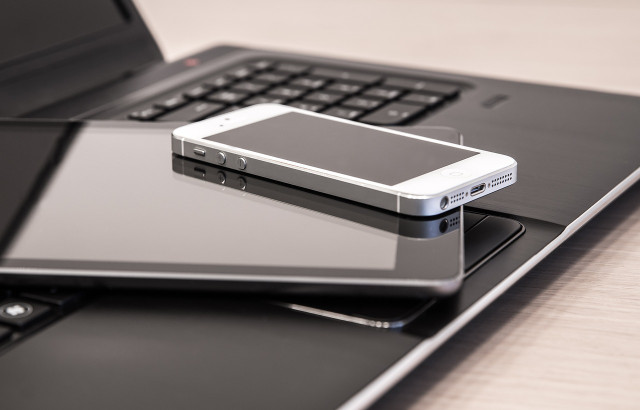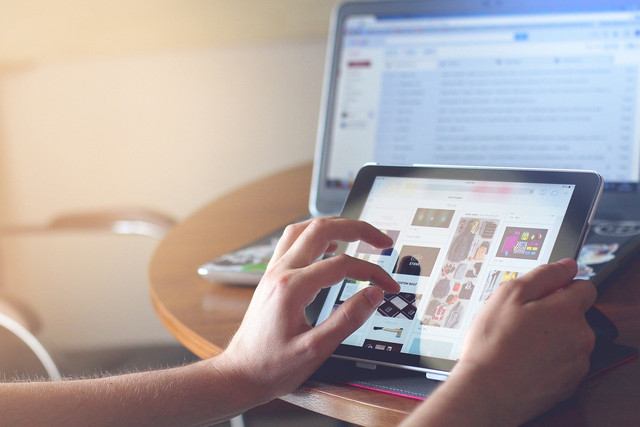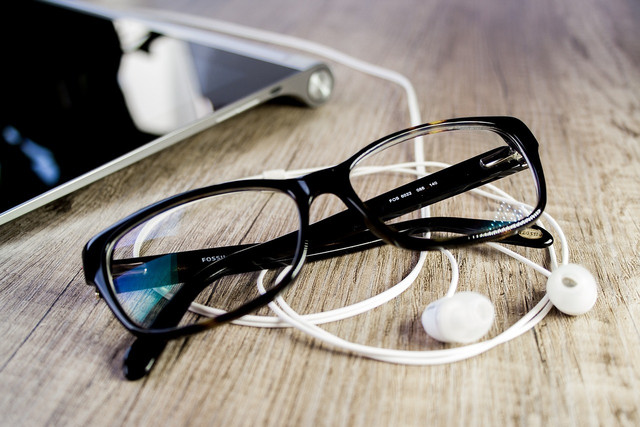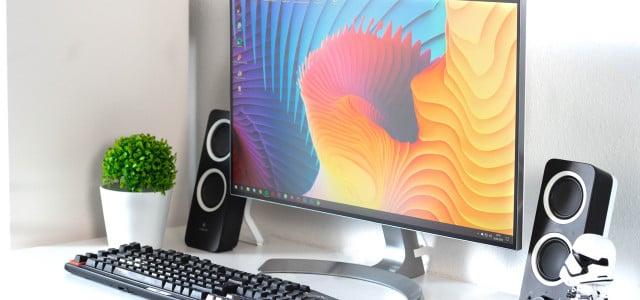Technology addiction is real, and there is a growing concern about the negative effects of technology on mental and physical health. Find out how to break the cycle.
Technology addiction is a real and growing concern. Smartphones and personal computers are now part of everyday life — and they are highly addictive. Most people are aware of the negative effects associated with other addictions like alcohol, drugs and gambling. But most people do not generally associate these serious effects with technology addiction. However, research suggests that technology addiction should be taken just as seriously.
According to the Pew Research Center, about 30 percent of Americans are almost constantly online and health officials are concerned about the amount of time both children and adults spend with technology. Research suggests that internet and social media addiction may affect over 210 million users worldwide. In 2019, 40 percent of Americans aged between 18 and 22 that used social media reported feeling addicted to it. Addiction is just one of many negative effects of social media and is resulting in many serious issues across all age groups.
What Is Technology Addiction?

The World Health Organization considers excessive technology use a significant public health concern and continues to study, define and recommend ways of preventing it. According to experts, Internet Addiction Disorder (IAD) is increasing rapidly in prevalence and results in physical, mental, socioeconomic and other negative outcomes.
Some argue that technology addiction should be included in the next version of the Diagnostic and Statistical Manual of Mental Disorders (DSM). The diagnosis is a compulsive-impulsive spectrum disorder that involves online and/or offline computer usage and includes (but is not limited to):
- Excessive gaming
- Sexual preoccupations
- Compulsive online shopping
- Scrolling
- Watching YouTube
- Spending time in chat rooms
- E-mailing/text messaging
Social media addiction is a common type of technology addiction. It is described as a behavioral addiction that causes symptoms like mood swings, uncontrollable desires to log on, and mental health disorders. Surveys in the US and Europe have indicated high prevalence rates of internet addiction, between 1.5 and 8.2%
Whether it’s video games, social media, internet surfing or other technology-related behaviors — we are breeding technology addicts in the US. Let’s look at the hidden effects of technology addiction causing so much concern.
Signs and Symptoms of Technology Addiction



Some signs of a technology addiction include:
- Inability to abstain from technology or compulsive use
- Preoccupation with thinking about using technological devices
- Experiencing cravings and urges to use digital devices
- Neglecting important life areas at the expense of technology
- Continuing to use digital devices despite negative consequences
- Losing interest in social and leisure activities
- Using digital devices in dangerous situations like driving
- Experiencing unwanted mental health symptoms at the expense of technological usage
- Using digital devices to induce pleasure or experience gratification
- Lying or hiding digital usage from family, friends or colleagues as a result of guilt or shame
- Using digital devices for longer durations than intended
1. Musculoskeletal Pain



Technology use is rarely associated with good posture. Research has demonstrated persistent associations between technology addicts and musculoskeletal problems across all age groups. Study findings have indicated that pain in the upper back, neck, and wrists/hands is higher among those with a smartphone addiction.
A consumer survey by the British Chiropractic Association (BCA) of more than 2000 UK adults who currently suffer or suffered from back or neck pain found that 56% of people experienced pain after using some form of technological device but that only 27% had limited or stopped using their devices because of these issues. The research showed people were most likely to experience back or neck pain after using:
- Laptop computer (35%)
- Desktop computer (35%)
- Smart phone (22%)
- Tablet (20%)
- Games console (17%)
Looking after your muscles and joints is important at any age. Whether you are a technology addict or not, learning how to stop slouching will benefit your posture. If it’s too late and you are already hurting, check out some home remedies for body aches and try to replace tech time with healthier activities.
2. Visual Disturbances



Technology addicts are at high risk for eye and vision problems. Recent research has highlighted how screen-related vision problems have “gradually shifted from being a workplace issue to a larger public health issue”, citing “digital eye strain” as a new clinical syndrome. Protecting your eyes is just one of many reasons why you should turn your phone off. If you must use a screen for prolonged periods, learn how to protect your eyes from screens.
3. Weight Gain



Technology addiction leads to a sedentary lifestyle for most addicts. Internet use is positively associated with increased odds of being overweight and obese.
Harvard recommends reducing screen time as part of the fight against growing numbers of obesity and obesity-related disorders like diabetes. Childhood obesity levels also continue to rise alongside childhood technology usage. Each additional hour per day of internet use has been associated with an 8% increased likelihood of weight gain and obesity, and kids are no exception.
If you are concerned about your weight — or your children’s — don’t fret. There are many ways to lose weight naturally, although it’s important to remember that not all bodies will respond to all methods. Exercise and drinking enough water are also important elements of maintaining a healthy weight. Always speak to your doctor before starting any weight loss methods, as a healthy weight looks different for different people.
4. Sleep Disturbances



Technology addicts are exposed to prolonged screen time, often late into the night. Many of us fall asleep in front of a screen. Research has found that exposure to electrical light before sleep can inhibit the body’s production of the hormone melatonin, which regulates sleep. The blue light emitted by smartphones and laptop screens is particularly problematic.
There are many ways to fix your sleep schedule and achieve a better nighttime routine. Practicing some yoga poses for better sleep can help. You can also try natural ways to wind down for the night — like sleep sounds or herbal sleeping aids. Turning off technology is the first step to a better sleep and recovery from technology addiction.
5. Headaches



Technology addiction is also associated with headaches and migraines. Medical professionals, who call the condition screen-dependency disorder, found a correlation between headaches and screen use among children. Computer use was a significant trigger factor in headaches in a separate study of children. The effect has also been found in adults.
There are many types of headaches, like cluster and tension headaches, and many causes. If you are concerned, it’s important to see your doctor. If you think your headache was caused by too much screen time, switch it off and try one of our natural home remedies for headaches.
6. Depression



Technology addiction is a critical risk factor for psychological ill-health. Researchers report a significant association between internet addiction and depression, as well as other mental health issues like anxiety, stress and irritability. Other studies attribute the stark rise in depression and suicide among young people to the simultaneous rise in smartphone and digital use among these age groups. Technology addiction is linked to suicide in some cases.
You can access many free helplines if you or someone you love suffers from depression. Like addiction, this disorder should be taken seriously, and professional help may be required. Many other things can be done to complement traditional approaches to depression management.
Learn how to beat a bad mood, or check out our article on emotional resilience training to boost your mental health. There are also many healthy ways to increase dopamine naturally. Technology addiction is not one of them.
7. Dissociation



As technology addicts become more and more engrossed in their favorite technology, they are at increased risk of dissociation from reality. The very act of scrolling has been linked to entering a dissociative state. Some even choose to dissociate from the real world in favor of the online fantasy one instead, according to some research.
Check out our top ten productive things to do instead of scrolling through your phone to limit your risk of dissociation and boost your mental health. There are many effective ways to get out of your head if you need to dissociate for a while, but prolonged withdrawal from the real world does not promote optimal well-being.
8. Low Self-Esteem



Low self-esteem is now also associated with technology addiction. Increased social media use may be a particular driver. Many platforms involve engaging in appearance-related behaviors like using filters and selfies, making many feel vulnerable and less attractive. This is a known risk factor for body image issues in young people, particularly girls.
Negative self-talk is a fast track to making a negative self-image worse. Check out our top five steps towards a positive body image and start to elevate your self-esteem.
9. Mental Health Disorders



The two behavioral disorders related to technology addiction and misuse that have been officially recognized as mental health disorders are:
- Gambling Disorder (by the American Psychiatric Association)
- Gaming Disorder (by the World Health Organization)
Both these disorders have a cause-and-effect relationship with technology addiction. Each is a form of addiction and can develop through prolonged screen time. The Cleveland Clinic characterizes video game addiction as a severely reduced control over gaming habits that results in negative impacts on daily functioning, including personal, social, educational and occupational responsibilities. This reduced control is also associated with gambling disorder.
American Addiction Centers points out that activities that were once done in a dedicated gambling environment — like a casino or bingo hall — can now be done from the home, the workplace and/or on the move. These factors are contributing to the rise in gambling addictions Some feel that social networking sites have the potential to normalize gambling and gaming behaviors, while others highlight the role technology plays in creating addicts. Recent research has found online gambling to be more addictive than casino gambling.
10. Increase in Risky Behavior



Risky behaviors appear to be higher among technology addicts, and there is particular concern about children and young people. The risk is so high that it is now strongly recommended that adolescents be screened for internet addiction and given training on appropriate use.
11. Cyberbullying



Victims of cyberbullying tend to have high rates of internet addiction, an association evident in younger populations. Research shows that 59% of American teens have been bullied or harassed online. According to Stopbullying.gov, the most common places where cyberbullying occurs are:
- Social media, such as Facebook, Instagram, Snapchat and TikTok
- Text messaging and messaging apps on mobile or tablet devices
- Instant messaging, direct messaging and online chatting over the internet
- Online forums, chat rooms and message boards such as Reddit
- Online gaming communities
If you or a loved one are being cyberbullied, the Cybersmile Foundation is a multi-award-winning, nonprofit organization that promotes digital well-being by tackling bullying and abuse online. They can offer help, support and guidance.
12. Loneliness



Internet addiction is now associated with loneliness across the globe. Like gaming and gambling, technology addiction appears to be both a cause and effect of social isolation and loneliness. Many people join social platforms to combat loneliness. However, research would suggest that increased problematic social media use is actually linked to more feelings of social isolation. People who use social media sites frequently are actually more likely to feel socially isolated rather than connected.
There are many other ways we can connect with others that do not lead to technology addiction. You can even learn how to overcome loneliness in the moment. Connect with others by checking out some ways to get involved in environmental activism in 2023 and NGO and non-profit organizations worth supporting. You might meet some new like-minded people.
13. Relationship Problems



Technology addiction can place a major strain on the addict’s relationships. 51% of Americans say their partner is often or sometimes distracted by their cell phone while they are trying to have a conversation with them — not exactly conducive to a positive relationship.
Mounting evidence suggests that social media use in particular can have a negative impact on overall relationship dynamics and quality. The higher the use, the more negative impacts for the technology addict. Researchers in Canada found that women spent much more time on Facebook than men and experienced significantly more jealousy when they or their partner were scrolling — although both sexes reported negative emotions.
Spending quality time away from technology is important for maintaining healthy relationships. Instead of scrolling or gaming, you could research some eco-friendly outdoor date ideas or have a picnic date for two.
14. Sexual Disorders



As technology addiction negatively impacts relationships, it also appears to be entwined with sexual disorders. The rate of sex addiction may be increasing in the US, and a study found that 4.7 million American adults spend over 11 hours per week looking at pornography online. Some experts believe sex addiction is driven by technology. Internet addiction, sex addiction and compulsive buying are all being examined together as some researchers seek solutions for our generation of technology addicts and their subsequent problems.
Managing Technology Addiction



China and South Korea have identified Internet addiction as a significant public health concern. Both countries support education, research and treatment to help technology addicts towards recovery. There has been no formal response from the US government to date about how to manage the condition.
Managing any addiction requires professional input, and we do not recommend trying to manage a serious technology addiction alone. The Addiction Center is a good place to find helpful information and support to begin your journey to recovery. You could also investigate activities and strategies that might complement your program, like a dopamine detox, a digital detox or other methods mentioned throughout the article.
Read more:
- Dopamine Dressing: The 2022 Trend That Makes Us & The Earth Happy
- How to Avoid Burnout: 7 Tips For Healthier Work
- How Sustainable are Online Streaming Services Really?
Do you like this post?








